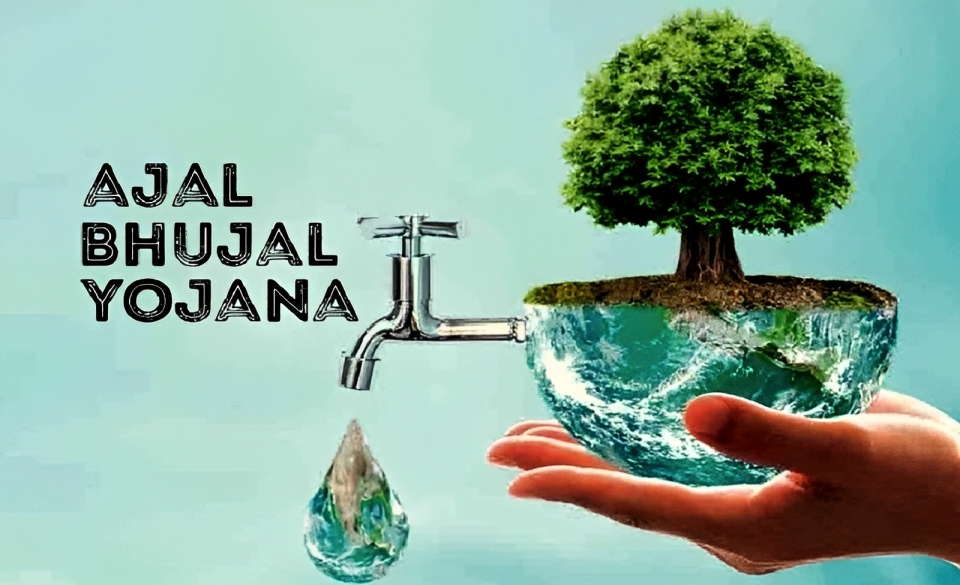Description

Copyright infringement not intended
Context: The fourth meeting of the National Level Steering Committee (NLSC) of the Atal Bhujal Yojana was held in New Delhi recently under the Chairmanship of Secretary, Department of Water Resources, RD & GR, Ministry of Jal Shakti.
Details
Atal Bhujal Yojana (Atal Jal)
- It is a central sector scheme launched by the Ministry of Jal Shakti in December 2019 to improve the management of groundwater resources in select water-stressed areas in seven states:
- Gujarat
- Haryana
- Karnataka
- Madhya Pradesh
- Maharashtra
- Rajasthan
- Uttar Pradesh
- The scheme has an outlay of Rs. 6000 crores, with 50% funding from the World Bank and 50% from the Government of India.
- The scheme will be implemented from 2020-21 to 2024-25.

The main objectives of Atal Bhujal Yojana are:
- To strengthen the institutional framework for participatory groundwater management and bring about behavioural changes at the community level for sustainable groundwater resource conservation.
- To facilitate the convergence of various ongoing government schemes and programs for optimal use of available funds and resources for groundwater management.
- To incentivize state governments for undertaking reforms in groundwater governance and ensuring compliance with Central Ground Water Authority (CGWA) guidelines for groundwater extraction.
To improve the monitoring and evaluation system for groundwater resources and use.
- The scheme has two components:
- Institutional Strengthening Capacity Building (ISCB)
- Incentive
- The ISCB component focuses on strengthening the institutional arrangements for groundwater management at national, state and district levels.
- It also supports the capacity building of various stakeholders, including government officials, water user associations, NGOs, researchers and media.
- The Incentive component provides performance-based incentives to states based on their achievements in improving groundwater management.
Some of the expected outcomes of the Atal Bhujal Yojana are:
- Improved groundwater level and quality in targeted areas.
- Increased awareness and participation of local communities in groundwater management.
- Enhanced data availability and dissemination on groundwater resources and use.
- Reduced dependency on groundwater for irrigation and domestic use.
- Increased crop productivity and income of farmers.
- Reduced vulnerability to droughts and floods.
Challenges in its implementation and impact
- Lack of awareness and participation among the stakeholders, especially the farmers, who are the main users and managers of groundwater resources.
- Inadequate data and information on groundwater availability, quality and use at different spatial and temporal scales.
- Weak enforcement of legal and regulatory frameworks for groundwater governance and protection.
- ompetition and conflict among different sectors and users over scarce groundwater resources.
- Ove
- Crexploitation and contamination of groundwater due to unsustainable agricultural practices, industrial activities and urbanization.
- Climate change impacts such as erratic rainfall patterns, droughts and floods that affect groundwater recharge and availability.
Steps need to be taken
- Strengthening the capacity building and awareness generation activities for all the stakeholders, especially the gram panchayats, water user associations and farmers, on various aspects of groundwater management such as hydrogeology, water budgeting, water quality monitoring, etc.
- Developing a robust groundwater information system that can provide reliable and timely data on groundwater status and trends at different levels of administration and planning.
- Strengthening the coordination and convergence among different departments and agencies involved in groundwater management such as agriculture, irrigation, rural development, environment, etc.
- Promoting participatory groundwater management through community-led initiatives such as water literacy campaigns, water audits, water user groups, etc.
- Implementing appropriate demand and supply-side interventions based on local hydrogeological conditions and socio-economic factors such as crop diversification, micro-irrigation, artificial recharge structures, etc.
- Enforcing strict regulations and incentives for rationalizing groundwater use and preventing its overexploitation and pollution such as metering, pricing, licensing, etc.
- Enhancing the adaptation and mitigation strategies for coping with climate change impacts on groundwater resources such as rainwater harvesting, drought-proofing, flood management, etc.

Conclusion
- Atal Bhujal Yojana is a visionary scheme that aims to address the critical issue of groundwater depletion in India. It is aligned with the Jal Jeevan Mission of the government, which seeks to provide safe and adequate drinking water to all rural households by 2024. By promoting community-led sustainable groundwater management, Atal Bhujal Yojana will contribute to water security, livelihood enhancement and environmental sustainability in India.
Must Read Articles:
Groundwater: https://www.iasgyan.in/daily-current-affairs/ground-water
Jal Jeevan Mission: https://www.iasgyan.in/daily-current-affairs/jal-jeevan-mission-49
|
PRACTICE QUESTION
Q. Groundwater is an essential resource that supports the livelihoods and well-being of millions of people in India. However, groundwater management is facing several challenges that threaten its sustainability and quality. How can India improve its groundwater management and ensure its long-term security? What are the best practices and innovations that can be adopted at different levels, from national to local, to address the complex and diverse groundwater problems in India?
|
https://pib.gov.in/PressReleasePage.aspx?PRID=1927572











